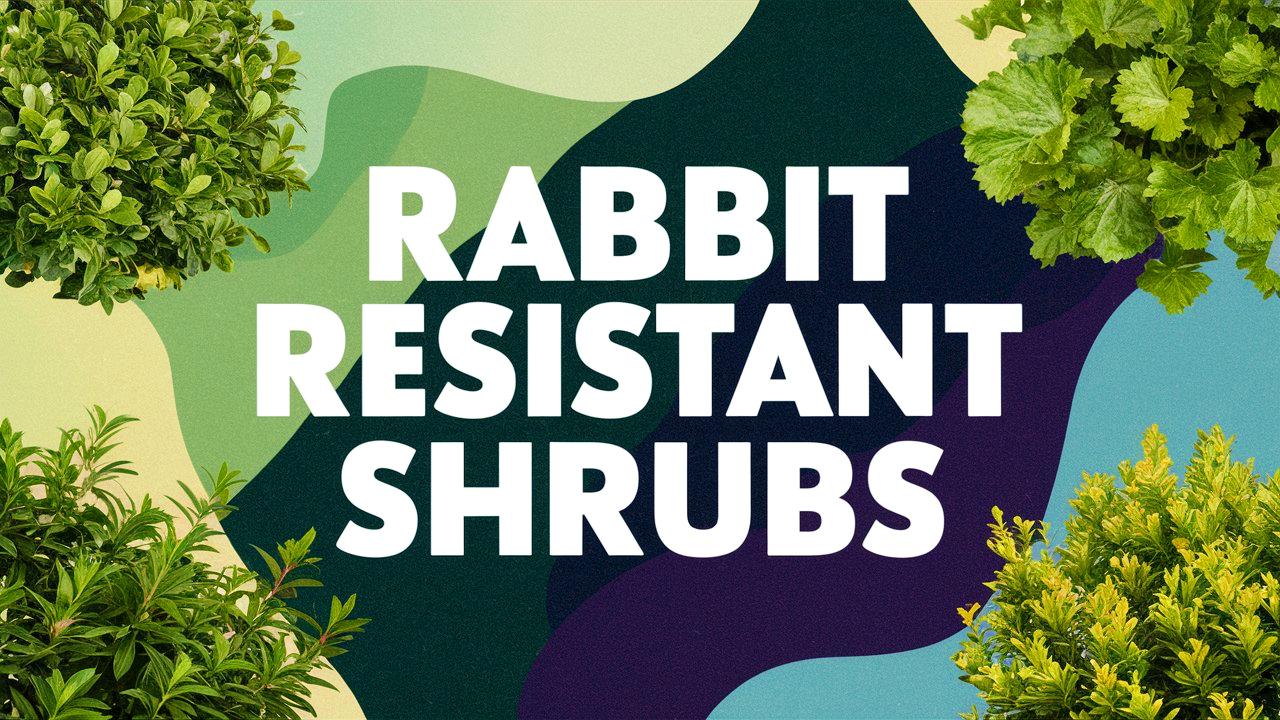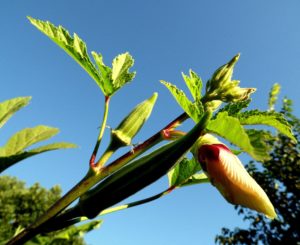Gardening can be a delightful experience, but it comes with its share of challenges. One of the most persistent nuisances for gardeners is the presence of rabbits, who can wreak havoc in flower beds and vegetable plots by their insatiable eating habits. To combat this problem, choosing the right plants is crucial.
This guide will introduce you to a selection of shrubs that are known for being rabbit resistant, providing delightful aesthetics while ensuring your garden remains intact.
Boxwood
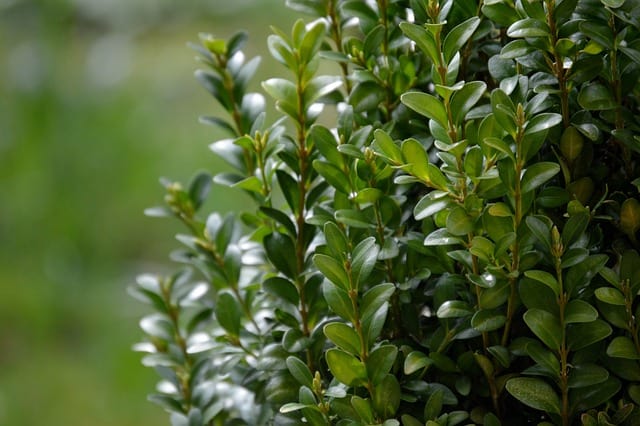
Boxwood (Buxus spp.) is a classic shrub that boasts dense, evergreen foliage, making it a popular choice for hedges and formal gardens. These shrubs can thrive in almost any soil type, provided it is well-drained, and they prefer partial shade to full sun. What truly makes boxwoods rabbit resistant is the chemical compounds present in their leaves, which tend to deter these critters from nibbling. Boxwood’s compact growth habit makes it ideal for creating structure in the garden, and it takes well to pruning, allowing for a variety of shapes and topiaries. Their rich green color also provides year-round interest, making them both functional and beautiful.
Moreover, boxwoods serve as an excellent backdrop for flowering plants, enhancing overall garden aesthetics. Keep in mind their slow growth rate; they require patience, but with proper care, they can last for decades, becoming a staple in your landscape.
Butterfly Bush
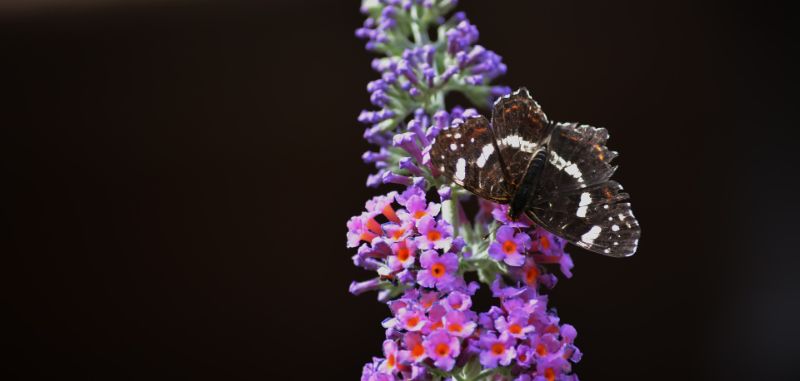
The Butterfly Bush (Buddleja davidii) is not only rabbit resistant but is also a charismatic addition to any garden, attracting butterflies and hummingbirds with its stunning and fragrant flower spikes. This deciduous shrub thrives in well-drained soil and full sun, making it a versatile choice for many gardening conditions. Butterfly bushes produce a profusion of flowers in various shades – purple, pink, blue, and white – from summer through fall.
Rabbits tend to shy away from the fragrant foliage and the slightly coarse texture of the leaves. These shrubs can grow quite large, often reaching heights between 5 to 10 feet, making them suitable as focal points or backdrops in a mixed border. Additionally, they require minimal maintenance, with periodic pruning in late winter or early spring to encourage new growth and extend blooming.
Butterfly bushes are also beneficial for pollinator populations, establishing a dynamic ecosystem in your garden. Their resilience, combined with their eye-catching blooms, makes them a valuable addition to a rabbit-resistant landscape.
Clematis
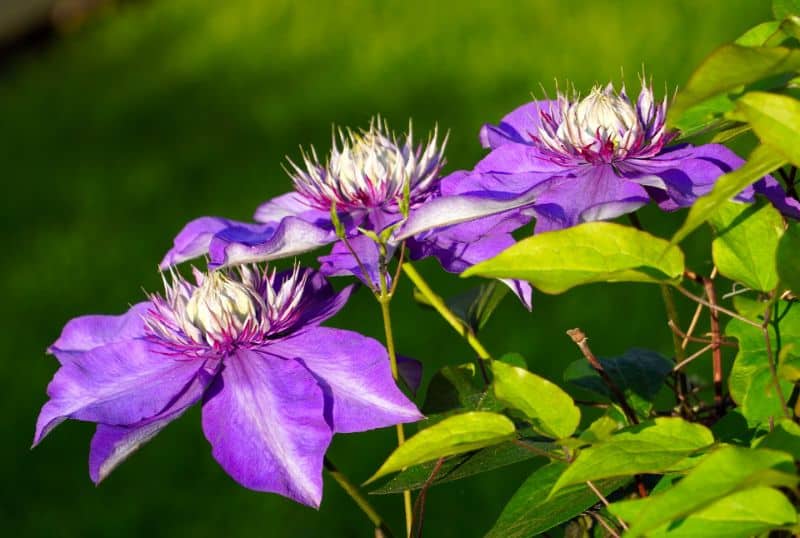
Clematis is a versatile climbing shrub known for its stunning flowers that can grace archways, trellises, and fences. While primarily recognized for its climbing abilities, there are several bush cultivars that remain compact and shrubby. Typically non-palatable to rabbits due to their tough foliage, Clematis features delicate star-shaped blooms in various colors, including deep purples, soft pinks, and stark whites.
Clematis plants prefer well-drained soil and grow best in full sun with their roots shaded. Their growth habit can vary greatly, allowing you to select varieties that suit your landscape’s needs. Clematis is also a perennial, which means it will return each year with even greater vigor after establishing itself.
Pruning can be performed based on the variety chosen, with some requiring little to no intervention, while others benefit from a more structured pruning schedule. The enchanting blooms coupled with their resistance to rabbit predation make Clematis an excellent choice for climbers in a rabbit-resistant garden.
Dwarf Birch
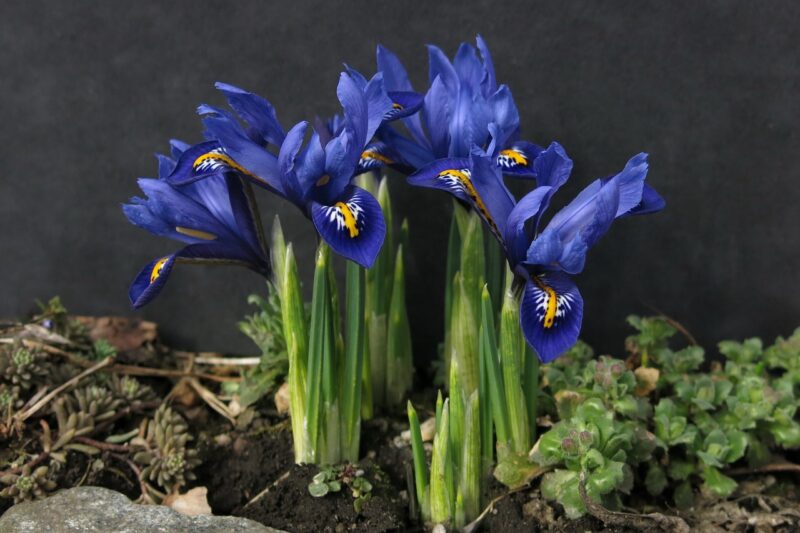
Dwarf Birch (Betula nana) is a low-growing shrub native to northern climates with a beautiful, delicate appearance. This hardy plant thrives in cold climates, showcasing attractive, slender branches adorned with small, serrated leaves. Dwarf birch has a fine texture that plays well in naturalistic gardens and can thrive in both wet and well-drained soils, making it quite versatile.
The reason for its rabbit resistance lies in its bark and foliage; rabbits tend to avoid its bitter-tasting leaves. Dwarf birch typically grows to about 2 feet tall and 3–4 feet wide, making it suitable for ground cover or borders.
The shrub’s summer foliage approaches a brilliant green, but in autumn, the leaves transform to brilliant yellow, creating a stunning visual contrast in the garden. During winter, the pealing, white bark adds character and interest to your landscape. As a species that adapts well to poor soil conditions, dwarf birch requires little care, allowing it to thrive in less than perfect environments.
Deutzia
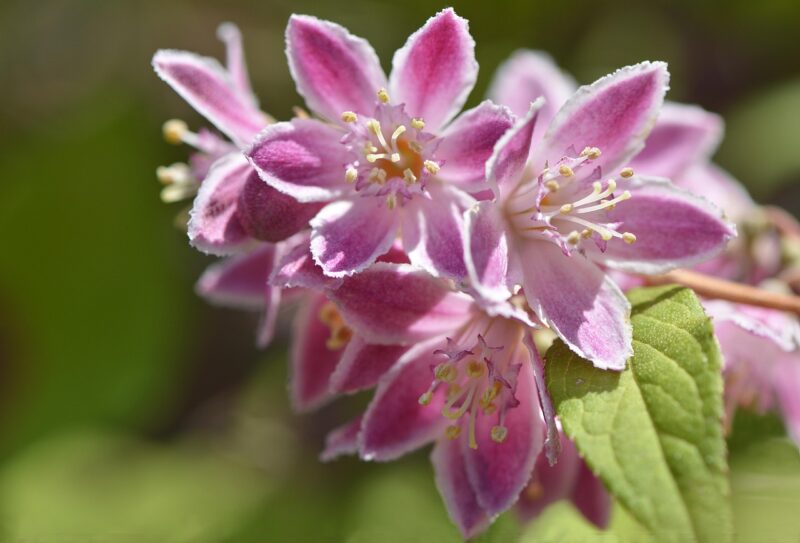
Deutzia is a versatile flowering shrub that offers an abundance of white or pink blossoms in late spring and early summer. Ranging from 3 to 6 feet tall, various species of Deutzia are available, making it suitable for various garden designs. The flowers attract pollinators while being distasteful to rabbits, ensuring that your delicate blooms remain safe.
With a preference for well-drained, moderately fertile soil and full sun, Deutzia thrives under slightly acidic conditions. Its arching branches create a soft, flowing appearance, which can enhance the garden’s aesthetic, particularly in cottage or informal settings.
Besides their ornamental quality, Deutzia shrubs are known for their resilience to pests and diseases, requiring little upkeep. After flowering, a light pruning can maintain their shape and encourage bushier growth. The delight of spring blossoms combined with the knowledge that they are largely ignored by rabbits makes Deutzia a valuable choice for rabbit-resistant landscaping.
Red-Twig Dogwood
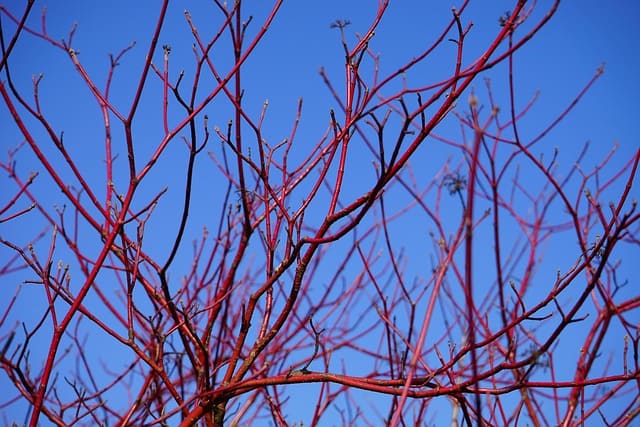
Red-Twig Dogwood (Cornus sericea) is a stunning shrub noted for its striking red stems, particularly appreciated during winter when the foliage is sparse. This shrub can reach sizes between 3 to 9 feet tall and thrives in moist, well-drained soils. Its attractive green leaves transform into vibrant hues in the fall, and small clusters of white flowers bloom in summer, followed by attractive berries that attract birds.
Rabbits typically avoid Red-Twig Dogwood, perhaps due to its slightly tougher leaves and stems. The vivid winter stems can serve as a prominent feature in the landscape, creating visual interest even in the cold months.
Pruning this shrub in late winter or early spring encourages the vibrant red coloration by stimulating new growth. Furthermore, these shrubs are versatile and can be planted in hedges, borders, or even as standalone specimens. Their multi-season appeal makes the Red-Twig Dogwood both beautiful and practical.
Elderberry
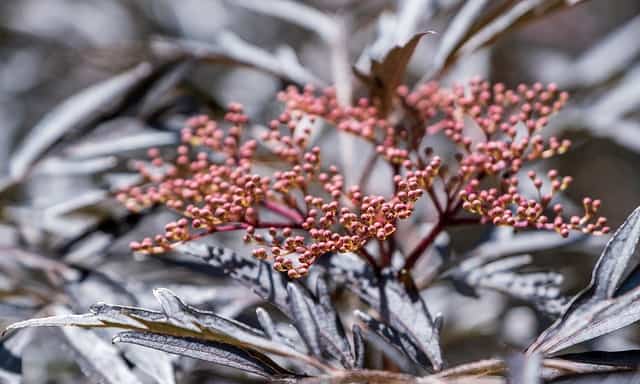
Elderberry (Sambucus spp.) is a delightful shrub that offers both ornamental and utilitarian benefits. Known for its showy clusters of white flowers and dark purple or black berries, elderberry shrubs can grow up to 12 feet tall. Elderberries thrive in well-drained soils, preferring moist locations with partial to full sun.
The foliage is aromatic, and while elderberries are generally avoided by rabbits, it is essential to note that the berries should be cooked before consumption. Their blossoms attract a wide array of pollinators, making them beneficial for cultivating biodiversity in your garden.
Elderberries can also be used in various recipes, from syrups to jams, giving gardeners the added incentive to cultivate them. Pruning should be conducted in early spring to maintain an attractive shape and health. Overall, elderberry is a fantastic option for those looking to combine aesthetics with practical uses in a rabbit-resistant garden.
Euonymus
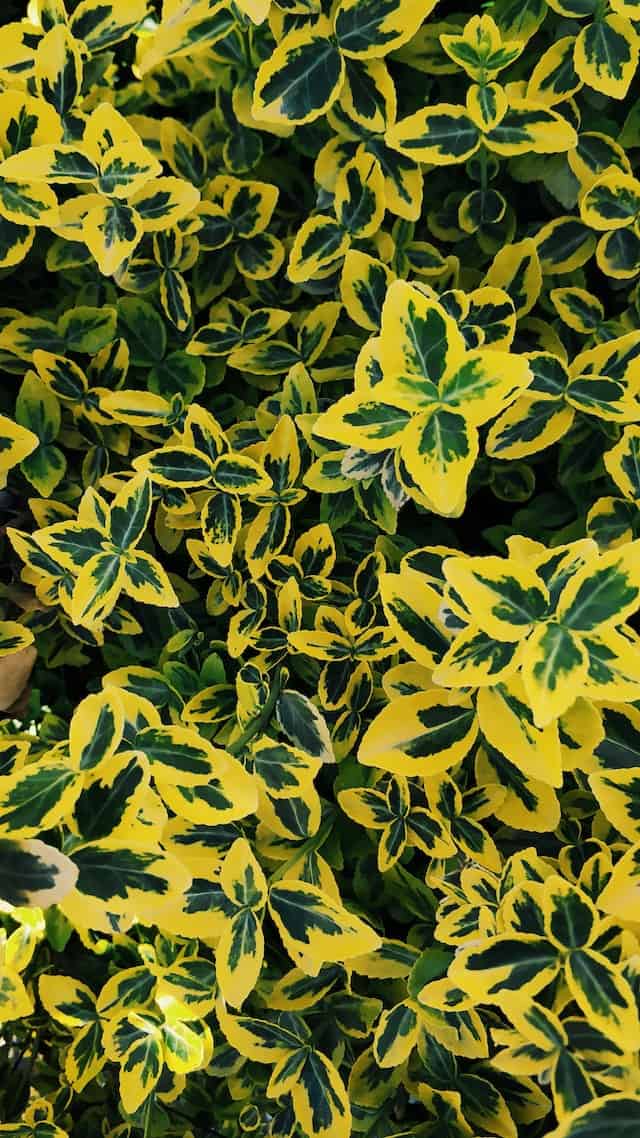
Euonymus is a diverse genus that includes both deciduous and evergreen varieties. Certain types, like Euonymus fortunei, are particularly resistant to rabbit browsing, thanks to their leathery leaves and twisting growth patterns. With numerous cultivars available, Euonymus can provide options ranging from ground covers to tall shrubs, making it versatile for various landscaping needs.
These shrubs are hardy and adaptable, flourishing in various soil types and light conditions. Their foliage can range in color from deep green to variegated forms, which add visual interest year-round. Some varieties also exhibit beautiful fall color, transitioning to shades of purple or red.
Euonymus grows relatively quickly and requires minimal maintenance. However, occasional pruning may help maintain desired shapes and densities. They are often used as foundation plants or along pathways due to their robustness and attractive appearance, making them a smart choice for any rabbit-resistant garden.
Lilac
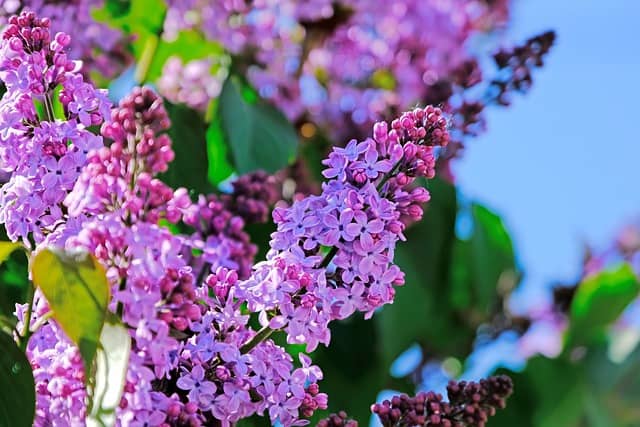
Lilacs (Syringa spp.) are classic shrubs beloved for their stunning flowers and delightful fragrance in spring. These deciduous shrubs can grow anywhere from 3 to 15 feet tall, depending on the variety, and are highly valued in traditional gardens. Lilacs thrive in well-drained, nutrient-rich soils, preferring full sun for maximal blooming.
Interestingly, rabbits tend to avoid the tough, thicker leaves and woodier stems of mature lilacs, making them rabbit-resistant. The planting of lilacs encourages wildlife attraction, particularly for bees and butterflies seeking nectar during the spring bloom period.
Pruning after flowering not only encourages healthier growth but enhances future bloom production. With their captivating fragrance and visual appeal, lilacs add both beauty and resistance to rabbit damage, making them a staple in many home gardens.
Mock Orange
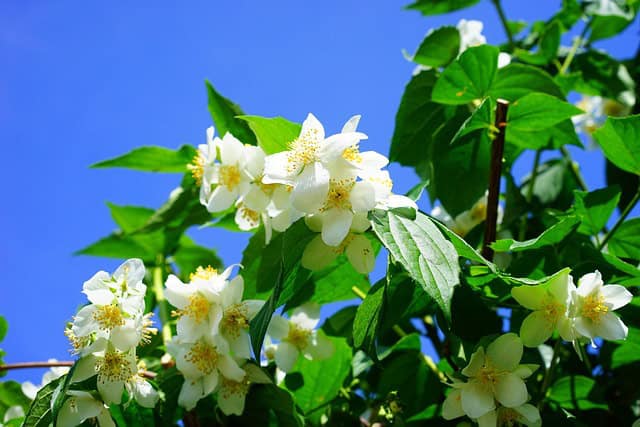
Mock Orange (Philadelphus spp.) is a deciduous shrub famous for its fragrant white flowers that resemble those of orange blossoms. Typically growing 5 to 10 feet tall, these shrubs thrive in well-drained soils and prefer a location with full sun.
Rabbits are again deterred by the plant’s robust foliage, allowing Mock Orange to thrive without concern. The blooms, which occur in late spring to early summer, are incredibly fragrant, providing an enticing scent that fills the garden air.
Regular pruning after flowering encourages dense growth and keeps the shrub well-shaped. The striking appearance combined with the delightful aroma makes Mock Orange a sophisticated addition to any rabbit-resistant garden.
St. John’s Wort
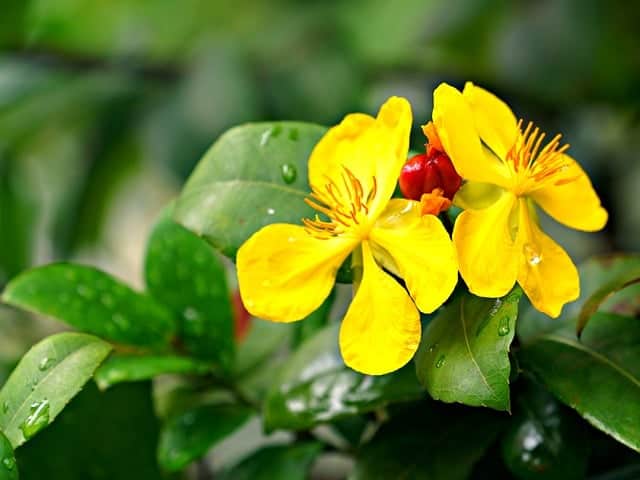
St. John’s Wort (Hypericum spp.) is a resilient shrub known for its vibrant yellow flowers and attractive green foliage. These shrubs thrive in a variety of soil types, from dry to moist, and adapt well to different lighting conditions, though they perform best in full sun.
The tough leaves and slightly bitter taste tend to repel rabbits, allowing St. John’s Wort to flourish in many gardens. This plant is not only attractive with its cheery blooms but also serves a purpose as a ground cover, making it effective in preventing weeds and providing habitat for beneficial insects.
Cutting back after flowering can improve bushiness and encourage fresh growth. For those interested in a low-maintenance, visually striking shrub with excellent resistance to rabbit predation, St. John’s Wort is an ideal candidate.
Scotch Broom
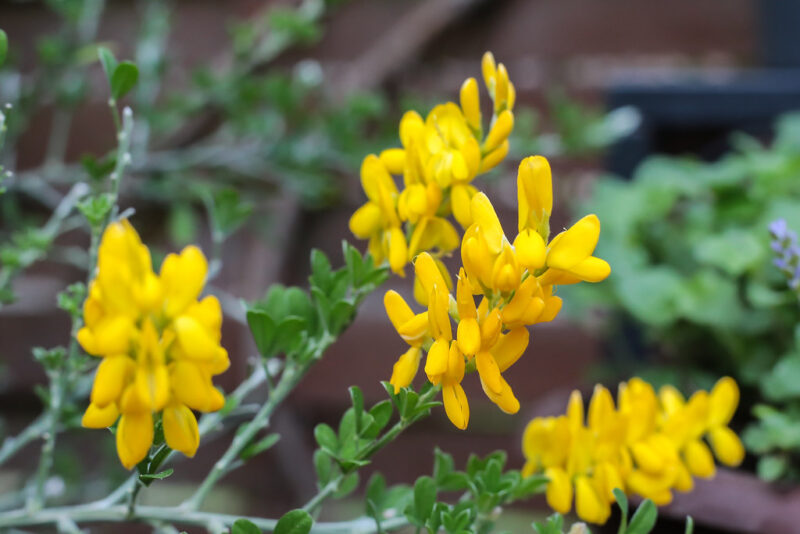
Scotch Broom (Cytisus scoparius) is a lovely flowering shrub noted for its bright yellow flowers that bloom in late spring and early summer. This hardy shrub can grow up to 6 feet tall and is often used for erosion control on slopes due to its extensive root system.
Rich in alkaloids, Scotch Broom is unappealing to rabbits, rendering it rabbit-resistant. Besides its utility, this shrub attracts bees, lending to sustainability within gardens.
Ideally planted in well-drained soil, Scotch Broom is drought-tolerant once established, which makes it an excellent choice for low-maintenance gardens. However, it’s important to note that in some regions, Scotch Broom can be invasive, so local guidelines should be consulted beforehand. With its vibrant colors and easy care, it’s an exquisite addition to any rabbit-resistant landscape.
Sweet Box
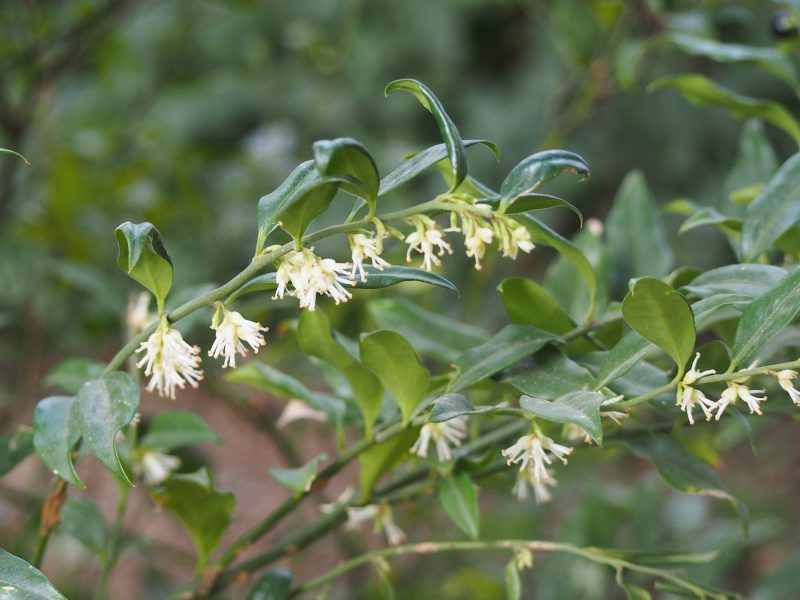
Sweet Box (Sarcococca spp.) is an evergreen shrub celebrated for its fragrant white flowers that bloom in late winter to early spring. Growing between 2 to 4 feet tall, Sweet Box is perfect for shaded areas or under trees, where most other shrubs struggle.
Its foliage is tough and leathery, which deters rabbits from feeding on it. As the flowers develop into bluish-black berries, they may provide interest and attract birds while remaining largely unharmed by rabbits.
These shrubs have minimal care requirements and can tolerate a variety of soil conditions. Pruning can be done to keep them in shape, but rarely is it necessary. Its subtle beauty and delightful scent, combined with its resistance to rabbit damage, establishes Sweet Box as an elegant choice for the shaded corners of a garden.
Viburnum
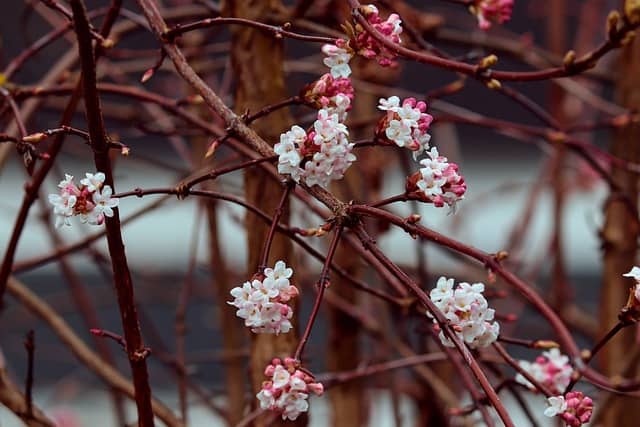
Viburnum is a diverse group of shrubs known for their attractive growth habits, stunning flowers, and vibrant fruit. Species like Viburnum dentatum and Viburnum opulus are popular choices, reaching heights of 4 to 12 feet. These shrubs thrive in a variety of soils and conditions, preferring full sun to partial shade.
Rabbits tend to avoid Viburnum due to their somewhat bitter leaves, making them another excellent option for rabbit-resistant gardens. The shrubs feature beautiful spring blooms that attract pollinators, followed by ornamental fruit that can persist into late fall, providing visual interest throughout several seasons.
Some varieties exhibit exceptional fall colors, transitioning into brilliant hues that create seasonal beauty. Regular pruning after bloom can maintain size and increase air circulation, promoting healthier growth. The combination of beauty and robust resistance to browsing makes Viburnum an unmissable option for any gardener.
Weigela
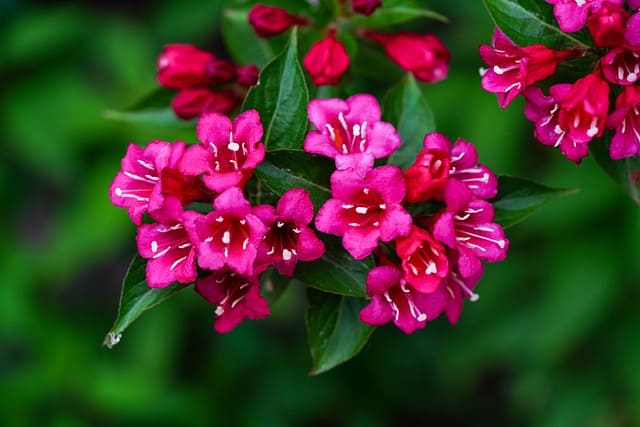
Weigela (Weigela florida) is a charming shrub celebrated for its tubular flowers that attract hummingbirds and other pollinators. Typically growing 3 to 5 feet tall with a spread that can be wider, these deciduous shrubs thrive in well-drained soils and full sun to partial shade.
Due to their tough leaves, which offer little appeal to hungry rabbits, Weigela constitutes another rabbit-resistant option for gardeners. Their fragrant flowers bloom in spring and may continue sporadically into summer, creating an inviting landscape that draws wildlife.
Pruning can be performed after the flowers fade to rejuvenate growth and maintain the desired shape. With a variety of colors available – from pink to red and white – Weigela can create a wonderful display, making it an exceptional choice for any garden.
Yew
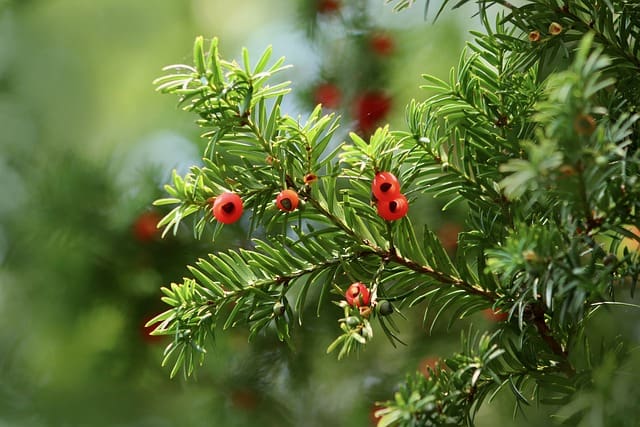
Yews (Taxus spp.) are evergreen shrubs known for their shade tolerance and versatility. Growing from ground cover varieties to taller hedges, yews can be effectively managed to suit various landscape needs while providing shelter for birds and small wildlife.
While yew foliage is often avoided by rabbits due to its toxic properties, this shrub stands as a reliable stalwart in the garden. They require well-drained soils and can thrive in full sunlight or complete shade, making them adaptable to multiple landscaping situations.
Yews pruned regularly can maintain a neat appearance and can serve as beautiful privacy screens or foundation plantings. Their robustness and year-round greenery make yews an excellent choice for gardeners seeking longevity and beauty while warding off rabbit visitors.


